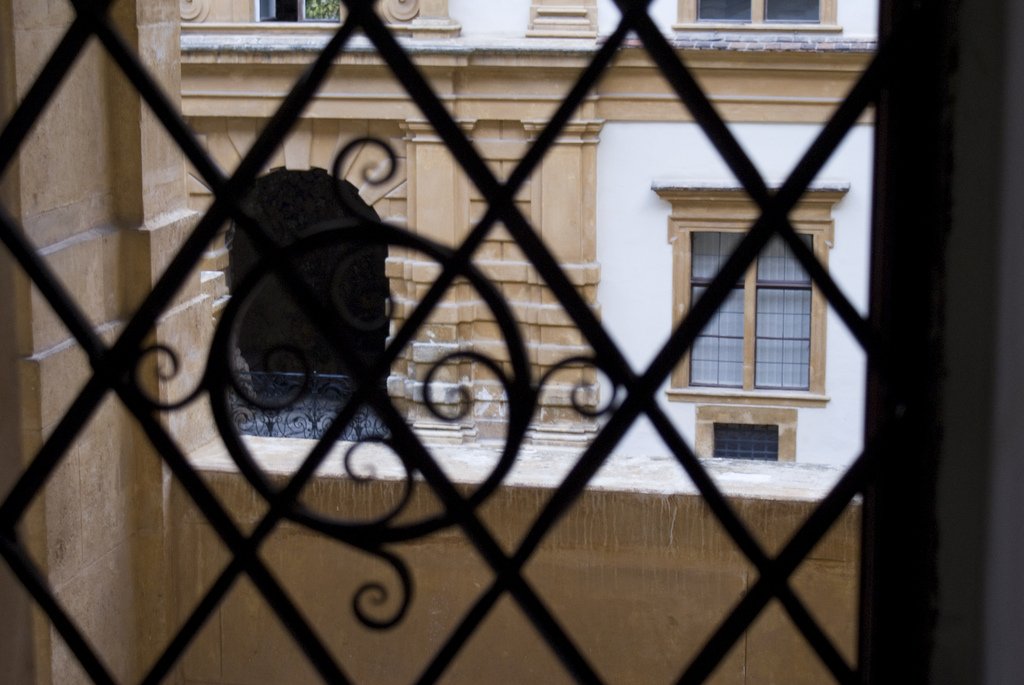Schloss Eggenberg
Eggenberg Castle Palace is Styria’s largest aristocratic residence, located on the outskirts of Graz. Since 2010, the castle has been listed as a UNESCO World Heritage Site.










General information
Eggenberg Castle was built in 1625 by Prince Eggenberg, who was an advisor to Ferdinand II. It is the jewel of Styria, Austria and the world. The time of the castle’s construction coincided with the moment of the calendar change, with the great scientific discoveries – everyone was looking for the truth. Everyone found it in his own way. Eggenberg saw it in architecture.
The castle was built in the true traditions of Buddhism, although people of that time did not even know about it. The palace has 365 windows – as many as there are days in a year – and the sun peeks through every window during the day. The park next to the castle has twelve gates – as many months in the year. And at the corners of the castle are four towers, which symbolize the four sides of the world and the four elements. Perhaps the architect wanted to tell us about the combination of the sides of the world and the elements.
.Eggenberg Palace is completely different from the Renaissance buildings. There is no pretentiousness, no pomp. It is simple, and with this simplicity it is genius.
History
Castle Eggenberg began to be built in 1625 by order of Prince Hans Ulrich von Eggenberg. He was a kind of Richelieu, only Austrian, was a close advisor, favorite of Emperor Ferdinand II.
.
The palace was built according to the project of the prince’s favorite architect – Giovanni Pietro de Pomisa. The famous architect was born presumably in 1565. He studied under the Venetian painter Jacopo Tintoretto. In 1595, he was invited to take the place of court painter to Archduke Ferdinand (who soon became emperor). Around 1600, de Pomis began working in Graz, where he was subsequently commissioned by the duke.
.The architect, aware of Hans Ulrich’s fascination with astrology, designed the castle in the spirit of the Renaissance. In addition to the house, the palace and park complex included a late Gothic style chapel built by the prince’s ancestors.
>
According to the architect’s idea, the castle was designed to remind of the movement of the stars and the passage of time. 52 rooms symbolize the number of weeks in a year, 24 service rooms symbolize the number of hours in one day, 12 gates symbolize the number of months, and 365 windows symbolize the number of days in a year. Another feature of the castle is that the sun peeks through every window throughout the day. This theme is continued in the interior design of the castle. For example, the walls of the front hall are painted with the signs of the zodiac, and the ceiling depicts the planetary system. It is for this reason that the hall is called the Room of Planets.
.The construction of the palace was completed after the death of Hans Ulrich von Eggenberg. The main finishing works were carried out from 1641 to 1646. In 1666 the prince’s grandson gave the artist Weissenkircher the task of executing 600 paintings to decorate the castle. By the way, these paintings are still pleasing to the eyes of visitors. The interior of the castle is executed in rococo and baroque style, saturated with ceiling paintings, stucco, crystal, antique furniture, paintings.
.
After the death of the last of the Eggenberg family, the castle was inherited by their close relatives, the Gerbersteins. They owned the house until 1939. After 1939, the government of Styria became the owner of the castle. Count Meran, a morganatic descendant of Austrian emperors, founded a hunting museum here, which was part of the oldest museum in the country, the Graz Art Museum.
.Nowadays, part of the castle premises is used to display an archaeological collection, the crowning piece of which is the Stretweg cult carriage. It dates back to 600 B.C. and was discovered in 1851 in the burial place of a prince in the village of Stretweg. Together with the wagon many other objects were found: bronze jewelry, iron weapons, amphorae. In addition to it, ancient objects from the Middle East and Egypt are also on display.
.Another attraction of the Eggenberg Palace is the coin collection, the second largest in Austria. This numismatic marvel includes more than 70,000 items.
.
Interesting facts
Eggenberg Castle can be seen on the 10 euro coin. The coin’s issue date is October 9, 2002, and the series is Austria and its People. Castles of Austria. The coin is made of silver, issued in an edition of 200,000. The reverse side of the coin depicts Johannes Kepler with his model of the Mystery of the Universe. He familiarized himself with the architecture of the Eggenberg Palace and taught in Graz.
.Tourists
Admission price:
.- adult – $9
- student – $4
- child – $4
Schedule:
.The castle is open to the public from April through October, daily, from 10:00 a.m. to 5:00 p.m.
.The Archaeological Museum and the Mint are open
- from March 1 to March 31, Tuesday – Sunday: 10:00-18:00;
- from April 1 through October 31, Tuesday through Sunday: 10:00-18:00;
- from November 1 through November 30, Tuesday through Sunday: 10:00 a.m.-4:00 p.m.;
- from December 1 to February 29, exhibitions are closed.
